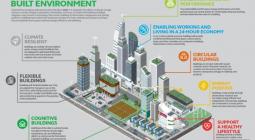As Cities Begin Banning Natural Gas, States Must Embrace Building Electrification Via Smart Policy.
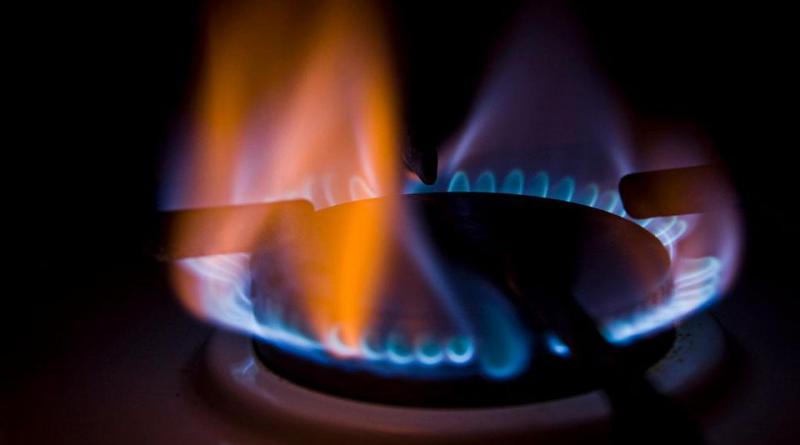
Berkeley, California became the first American city to ban natural gas infrastructure in new buildings last week after PG&E, the second-largest U.S. utility and notably both a gas and electric utility, publicly supportedthe move. But Berkeley isn’t alone—it’s leading a national trend that will cut natural gas demand through building electrification.
“Building electrification” means swapping out fossil-fuel-powered appliances for electric appliances (or “fuel switching”) in a significant fraction of buildings. Several other California cities, including Los Angeles and San Francisco, are considering building electrification ordinances, New Jersey’s draft Energy Master Plan would end natural gasuse in buildings by 2030, and new Maine laws will reduce natural gas use in buildings. Meanwhile, eight states, along with Washington, D.C. and Puerto Rico, have established 100% clean electricity goals. Because electricity is getting increasingly cleaner, it’s imperative that policymakers adopt policies to power buildings with electricity to help put us on a path to meet climate goals.
Building electrification has been an overlooked climate imperative: Fully decarbonizing the U.S. electricity sector would only address 28% of total U.S. greenhouse gas (GHG) emissions. Decarbonizing the entire economy will require tackling all sectors, especially buildings, which are responsible for 12% of total U.S. emissions. Beyond climate, building electrification helps cut consumer costs, integrate renewable energy, and reduce air pollution.

U.S. ENVIRONMENTAL PROTECTION AGENCY
Policymakers can use legislative and regulatory policy levers to electrify buildings. Setting targets for new construction and retrofits prompts efficiency improvements and building electrification, helping policymakers reach electrification goals while saving consumers money. However, establishing a clean electricity standard is a monumental first policy step to enable fueling the building sector with carbon-free power.
The business-as-usual risks of powering buildings with natural gas
Building sector emissions from fuel burned on-site compose about 12% of economy-wide emissions, and commercial and residential buildings also consume more than 70% of total U.S. electricity. Natural gas is the dominant fossil fuel used to heat buildings, and associated methane leakage in gas production and distribution increases its GHG impact—more natural gas demand in new and existing buildings means more methane leakage. Electricity comprises the rest of building energy use, with resulting GHG emissions determined by the power mix in that utility territory.
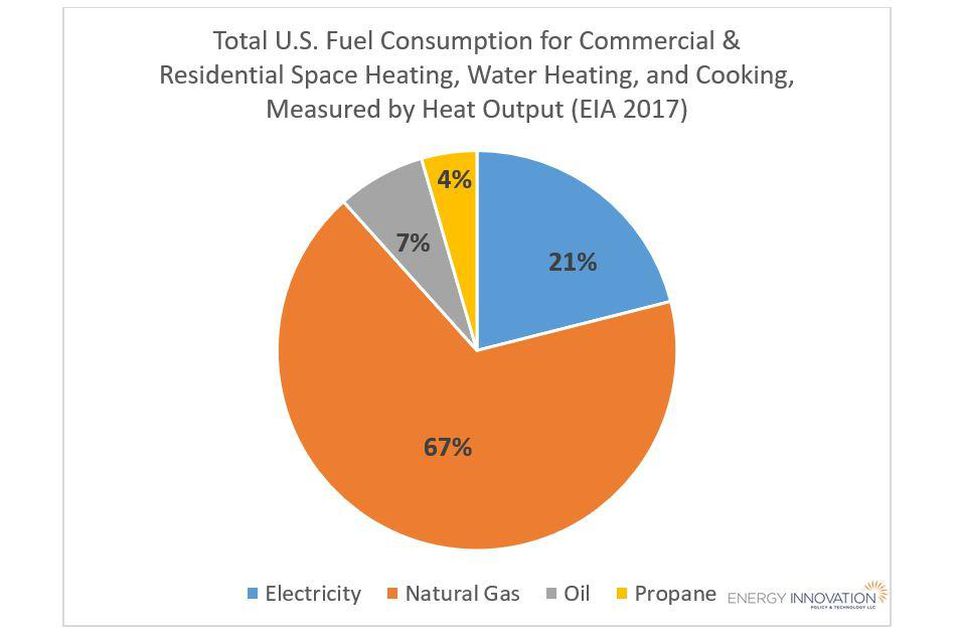
ENERGY INNOVATION USING DATA FROM THE U.S. ENERGY INFORMATION ADMINISTRATION
Because our building stock averages a 50-year turnover period, and most existing buildings will remain standing in 2050, policymakers must ensure new builds are all-electric and retrofit existing buildings—a harder to reach and much larger segment of the sector. For years, natural gas has been considered a “bridge fuel” or “middle ground” between coal and carbon-free energy, but rapidly decarbonizing our building stock to meet climate goals requires phasing out natural gas. Incorporating natural gas appliances into buildings now locks in gas use for decades to come, maintaining or increasing natural gas demand while undermining thecost savings from building electrification.
Policymakers should also consider the health impacts of burning fossil fuels in buildings. Using a natural gas stove in kitchens can createunhealthy indoor air quality conditions. “[D]uring a typical winter week, 1.7 million Californians could be exposed to [carbon monoxide] levels that exceed standards for ambient air, and 12 million could be exposed to excessive [nitrogen dioxide] levels, if they do not use venting range hoods during cooking,” according to a study by Lawrence Berkeley National Laboratory and Stanford University. In addition to unhealthy air concerns, natural gas poses considerable fire safety risks.
Existing technologies empower building electrification
Technologies are available today to efficiently and affordably electrify homes and businesses, most notably heat pumps for heating and cooling space and water. Heat pumps are highly efficient; air source heat pumps can reduce electricity use 50% compared to electric resistance appliances. Not only are heat pumps significantly more efficient than older electric appliances, they also win on efficiency compared to natural gas appliances. Heat pump water heaters are three to five times more energy efficient than gas storage water heaters, while heat pumps can perform well even in the harshest cold climates. And highly efficient induction cooktops are gaining popularity among elite chefs, helping make electric stoves the most desirable option for home and professional cooks alike.
Smart appliances also help reduce economy-wide emissions by responding to real-time price signals that attempt to match electricity usage based on system conditions. As more buildings (and vehicles) are electrified, electricity demand will grow—meaning our electricity usage must be smarter to optimize electric infrastructure investment and keep consumer electricity costs low. Additionally, energy efficiency measures help reduce total electricity demand as electrification progresses: Demand-side management programs can reduce energy use as well as reduce peak demand. For example, Texas grid operator ERCOT reduced peak demand by 3.7% in 2017 through demand management. Moreover, a recent study found that consumers could save up to 25% on electric bills by using demand-responsive appliances that respond to a utility time-of-use tariff.
Rocky Mountain Institute’s study, The Economics of Electrifying Buildings, found that in many scenarios, building electrification is more cost-effective than using fossil fuels over an appliance’s lifetime. New all-electric construction is nearly always cost-effective, and retrofitting is most cost-effective when multiple appliance upgrades occur at once or when customers are either bundling electrification upgrades with rooftop solar or switching from propane or oil.
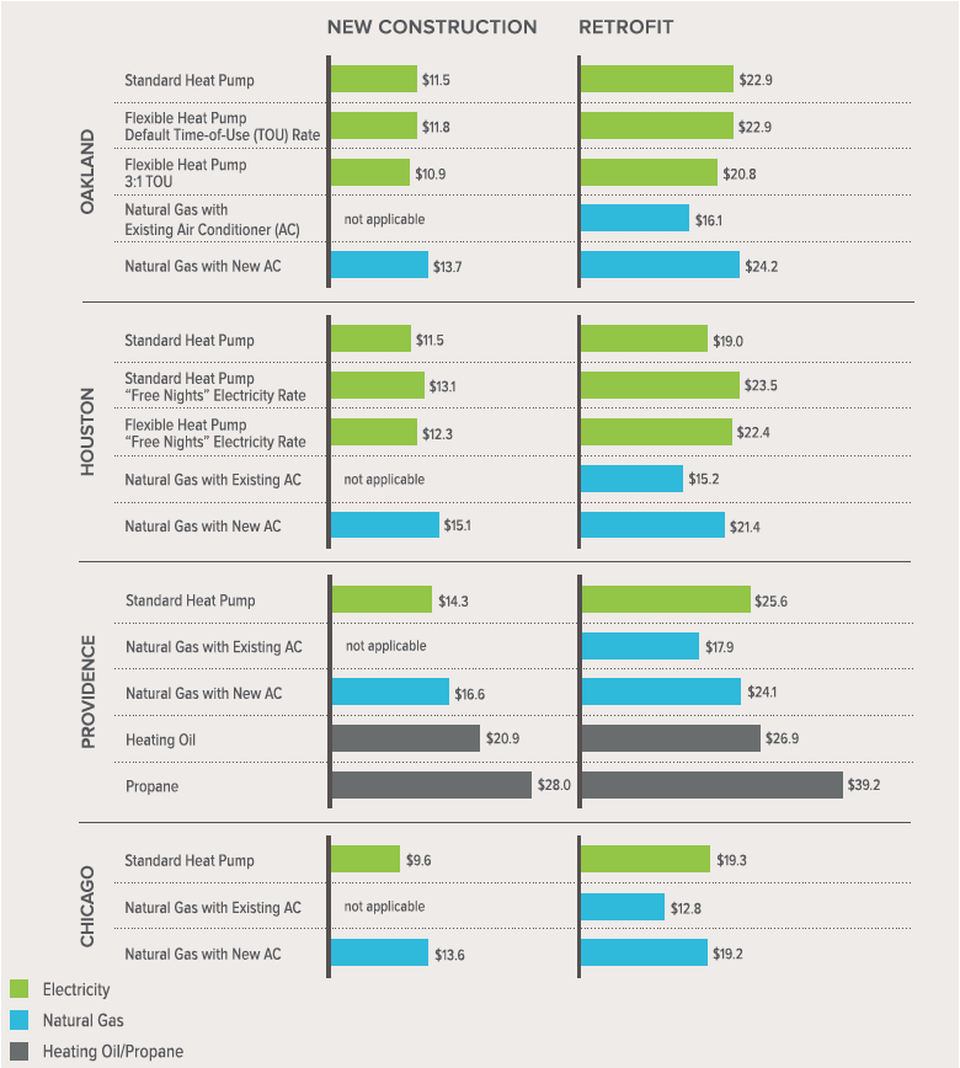
What are the top state-level building electrification policies?
State policymakers play a critical role in building electrification because they set codes and standards, regulate utilities, and determine incentive programs. Building electrification opportunities do exist at the federal and city levels, but are more limited in scope and scale, respectively, than state action. Additionally, as states focus on decarbonizing their electricity, they can also plug in building decarbonization policies to continue driving down emissions. With technologies to cost-effectively decarbonize buildings in hand, smart policy can help overcome barriers to accelerated adoption like upfront capital cost of electric appliances, lack of efficiency funding, incoherent building codes, incentives and subsidies for natural gas infrastructure, and outdated electric utility regulations standing in the way. Here are the key tools state policymakers should consider for building electrification:
Target setting
A statewide target to measure building electrification success can guide implementing agency policy and provide goals for stakeholders throughout the state. Three- to five-year interim targets should accompany long-term targets, with regular progress updates to the legislature. States should also set targets for annual building retrofits (which should include major equipment upgrades and fuel switching) to complement statewide building emissions reduction targets.
Incentivize building electrification and efficiency retrofits
States should incentivize retrofits combining HVAC and appliance electrification, whole-building envelope retrofits, and on-site clean power generation (e.g., rooftop solar). A program with financial incentives including low-interest loans, on-bill financing, property tax financing, and cash rebates at point of sale or for distributors and contractors for building decarbonization retrofitting could significantly improve the economics of retrofitting.
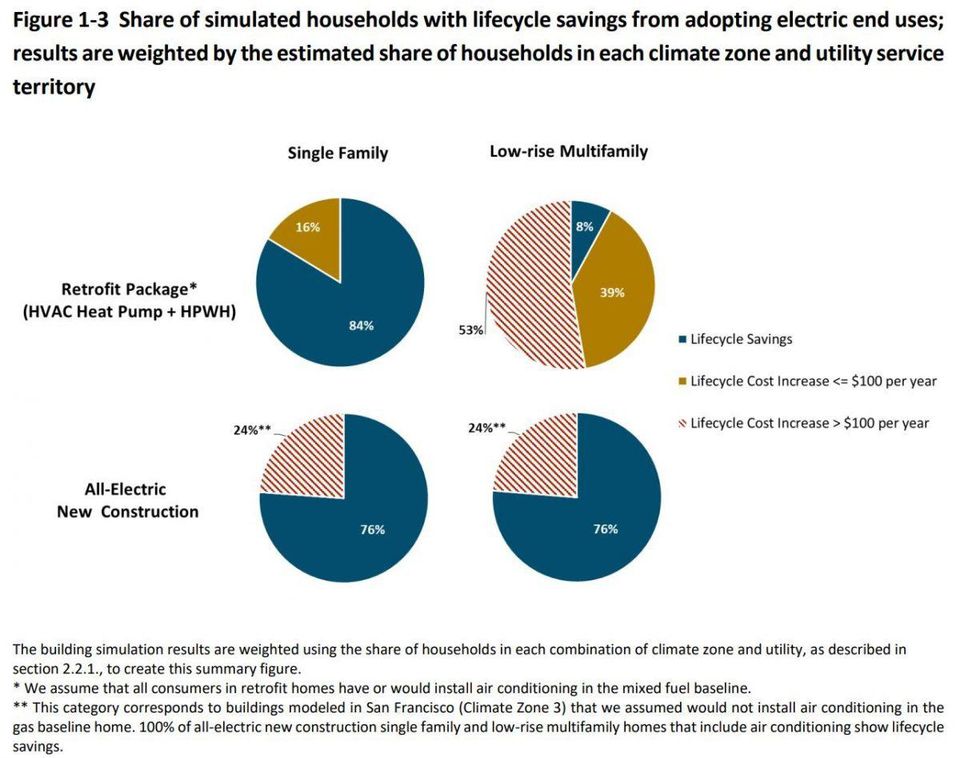
Update building codes to require high-efficiency, all-electric new construction, and focus on retrofits
All states should have a building energy code, which should be automatically reviewed and revised every three years, and should allow local jurisdictions to adopt a more stringent code. States should consider adopting the latest International Code Council’s International Energy Conservation Code as an alternative to creating their own building energy code (although it does not currently include electrification measures, which can be added when adopted). Most current state building energy codes only address energy efficiency, but state codes should also incorporate electrification measures, such as Berkeley’s requirement that all new buildings be built all-electric.
However, building codes today don’t typically impact existing buildings. By including major building retrofit measures, building codes can expand their reach, increase the rate of building electrification, and reduce the all-in cost of building decarbonization.
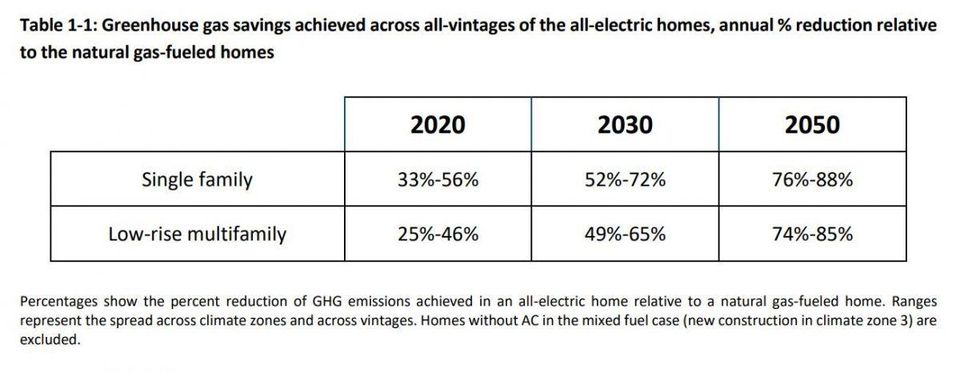
Promote regulatory reform for electric utilities to encourage building electrification
Electric utilities can help customers electrify by offering incentives, connecting customers to trusted and qualified contractors, validating the quality of devices, and influencing how customers consume electricity once they electrify. An optimal building electrification program should encourage customers to shift their usage to hours when energy is cheaper and cleaner through pricing, incentives, and customer education.
Performance-based regulation can help align utility incentives with climate and customer goals, by providing financial incentives when utilities meet building electrification targets while keeping peak demand increases and overall system costs low.
Align regulation with a diminished natural gas utility business
Gas utility infrastructure has a useful life of 50-80 years. Given the need to reach near-zero emissions economy-wide by 2050 for a safe climate and the fact we are still investing in new and existing pipelines today, natural gas (and mixed-fuel) utility revenue models must be radically restructured to ensure a smooth transition to all-electric buildings. Policymakers should re-evaluate how long utilities will be allowed to depreciate new investments in their piping systems, and carefully adjust the investment rate of return and compensation for stranded assets.
Policymakers should also consider equity when designing and implementing building decarbonization policies. Given retrofit costs and benefits, split incentives, and health and safety risks, it is important that low- and middle-income as well as disadvantaged communities do not bear disproportionate costs and have ample opportunity to reap the benefits of building electrification.
Building electrification is an environmental and economic opportunity
Building electrification offers environmental and economic opportunity for meeting ambitious climate goals. For speed and scale to meet climate goals, states should adopt building electrification policies similar to those in trailblazing cities.
State policymakers have a pivotal role to play in electrification, which can rid our building stock of emissions-intensive and unhealthy fossil fuels. And the time is right for utilities to encourage building electrification that empowers consumers to adopt electric appliances, bringing comfort and service at affordable prices.
*Amanda Myers is a policy analyst at Energy Innovation, focused on the U.S. power sector transformation.
July 2019
Forbes


